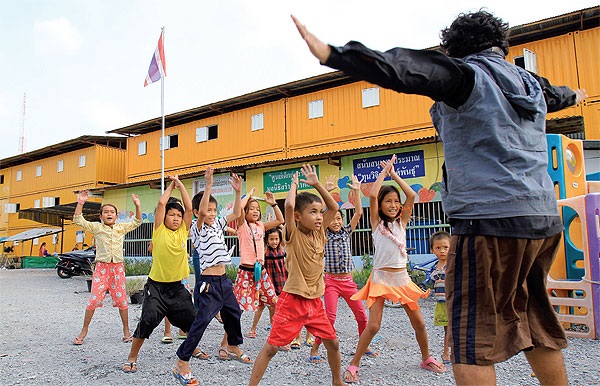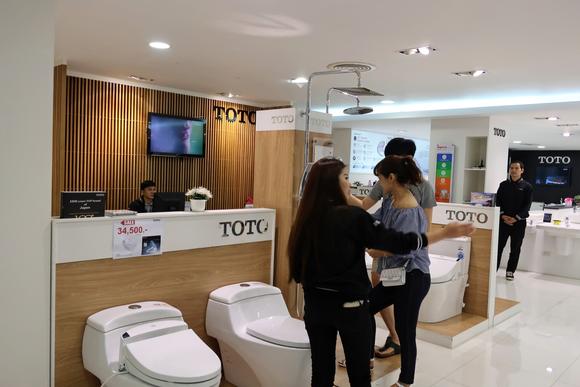SAMUT PRAKAN, Thailand – Hundreds of construction workers return home each day to a makeshift village of shipping containers, erected as a temporary settlement for the migrants on the outskirts of Bangkok.
Each of the 12 blocks, which resemble giant yellow Lego bricks, is made up of two towers of 9 containers and has 72 rooms, 3 square meters each, which are sometimes occupied by whole families with children.
The 400-strong village, mostly made up of workers from Cambodia, Myanmar and Laos, was set up by a construction company to house the migrant workers employed to build condominiums.
The workers are expected to live in the containers for the estimated three years it will take to complete the construction of the condominiums.
The village can house up to 800 people, and has electricity but no running water. Because of this, the construction company pays only fees for temporary dwellings. The company plans to use the shipping containers as a long term solution to housing for the workers.
“We will stay here for about three years while raising a tower condominium. Once the works are completed, the containers will be dismantled and transported to a new location, where we will continue with the construction of new buildings,” Surachai Piyasomboon, the head of work and manager of the complex, told EFE.
Tenants say the basic living conditions provided are actually better than the housing provided by other companies.
“I have stayed here for a long time, my bosses and colleagues are good. I feel comfortable in the place and appreciate having the salary to send back to my family,” said Sophon, a worker from neighboring Cambodia.
The temporary village also has a small bar and food market, a hair salon and even a school, attended by a dozen of the migrant worker’s children.
“We provide a basic education to children and a place where they can play safely while they are monitored and their parents work,” said one of the teachers at the center, who works for free.
Other children from the nearby community, who are generally Thai or speak the local language, study at a Buddhist temple located near the settlement.
“We have a number of established standards to ensure good relations. So far we have not seen any problems either within the camp or with the neighbors,” said Surachai, adding there are at least three similar camps, although with less people, at sites around the Thai capital.
The long, exhausting days of construction work and a salary which does not exceed minimum wage 300 baht ($8.30) per day, are two reasons the Thai labor force refuses to work in the construction sector, which is largely dominated by migrant workers.
An estimated four million people from Laos, Cambodia and especially Myanmar work in various labor sectors in Thailand, many under the table.
At sunset, dozens of trucks packed with weary workers stream into the camp where they spend the night.
The dust raised by the parade of vehicles seems to go unnoticed by two small children playing a game nearby with a toy crane and bulldozer, an imitation of their parents’ professions.
“When I’m bigger, I want to be like them,” says one of the children with a wide smile.
Source: http://www.laht.com/article.asp?ArticleId=2403719&CategoryId=12396



